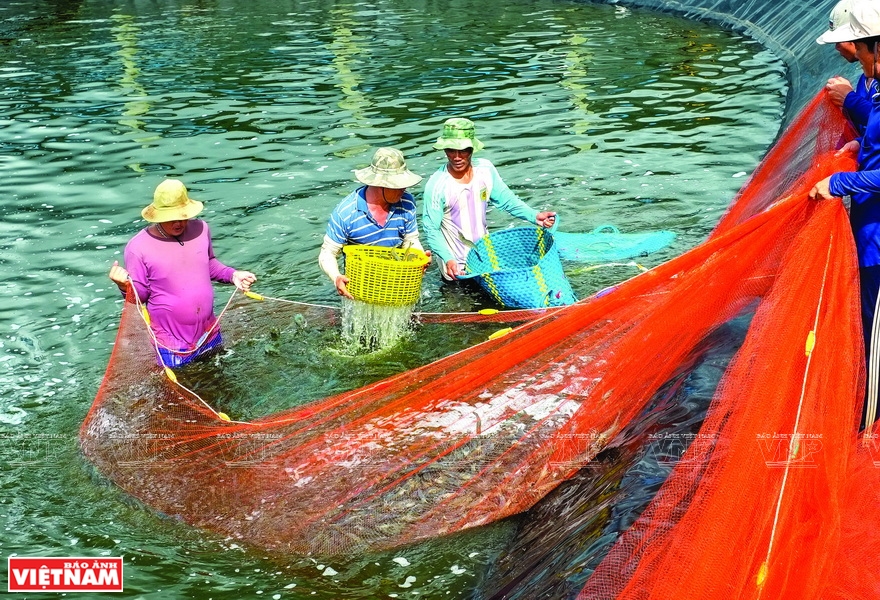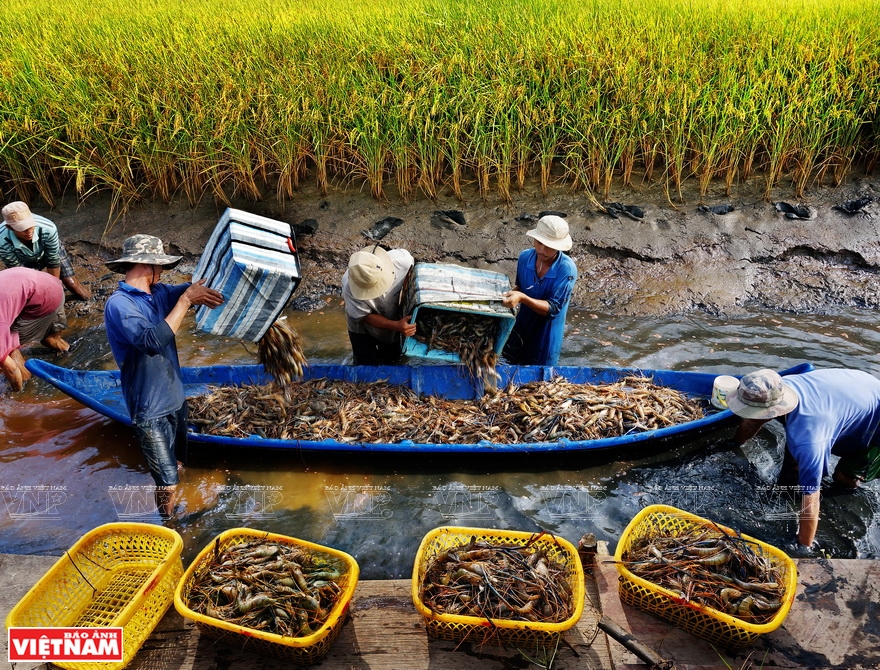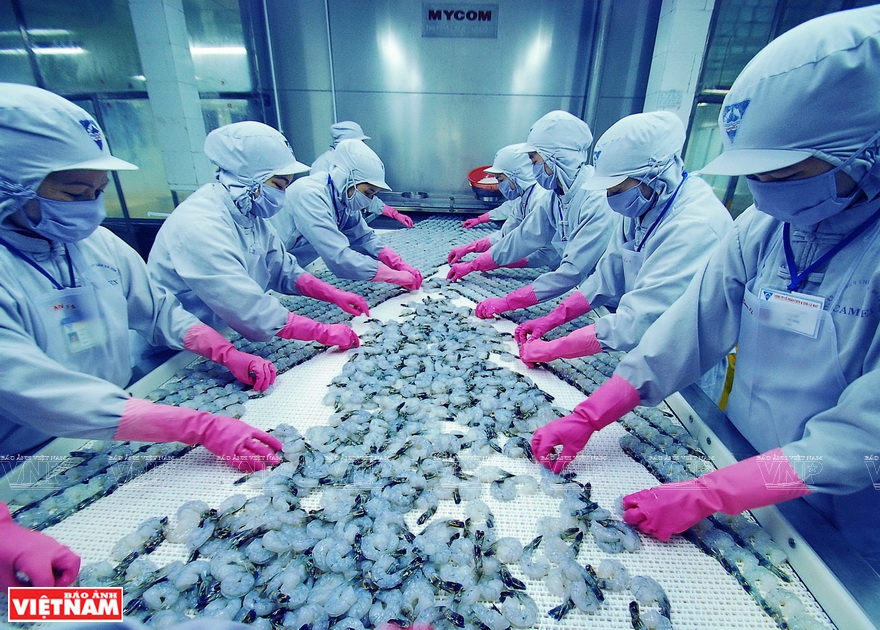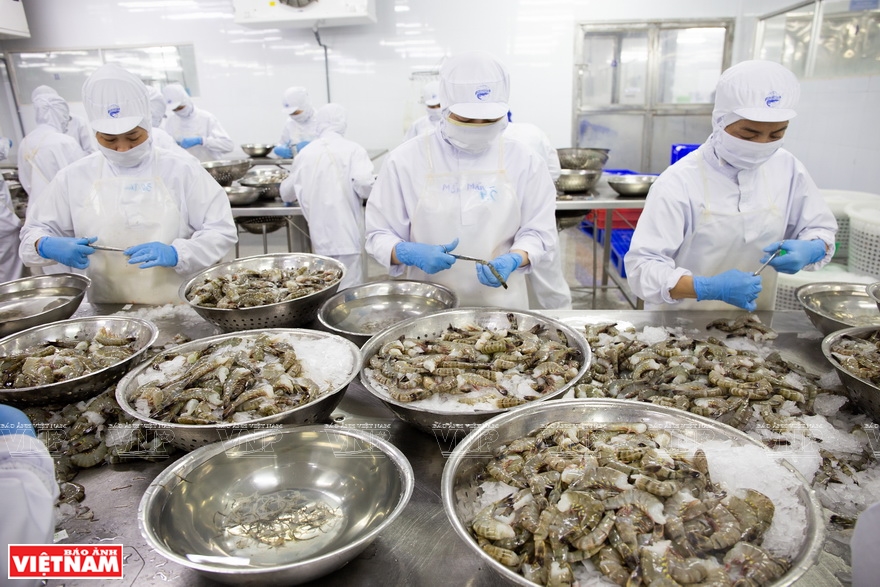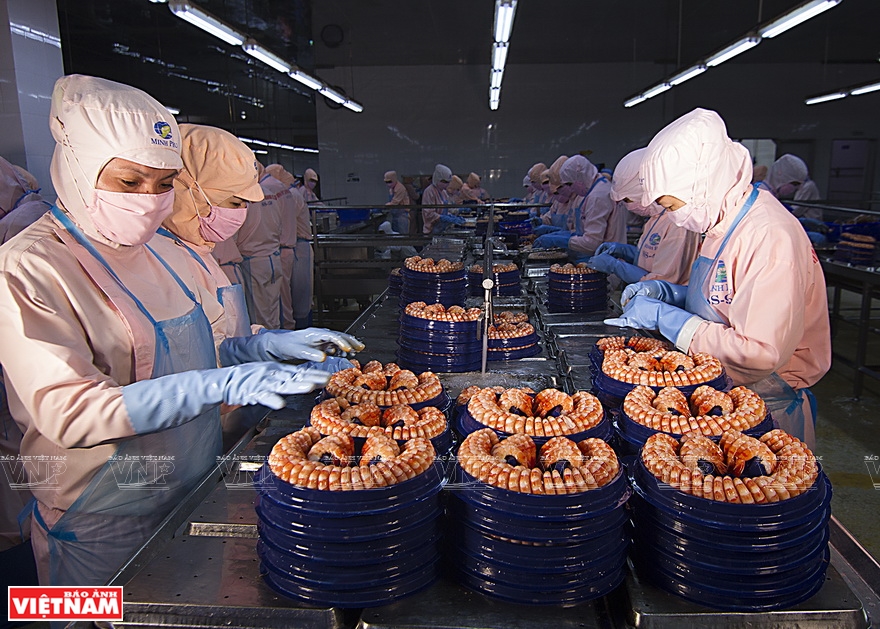Vietnam has 30 provinces raising tiger prawn and whiteleg shrimp, of which Ca Mau is leading in both the farming area and output. Ca Mau has chosen shrimp farming as a key industry prioritized for development.
| The Europe-Vietnam Free Trade Agreement has brought about advantages for the shrimp industry, including removal of tariff barriers and opportunities to diversify input material supply sources. |
We visited Phan Thanh Hung’s shrimp farm in Nam Can district, Ca Mau, when his two shrimp ponds were about to be harvested.
In the past, Hung, like other local farmers, raised shrimp by the traditional farming method which earned little profit.
In 2018, Hung shifted to intensive shrimp farming, allowing him to raise shrimps three crops a year, each of which lasts about four months. With the shrimp price averaging at 150,000-200,000 dong (6.5-8.7 US dollars), Hung earns a profit of 500 million dong (nearly 21,800 US dollars)/crop, much higher than previously.
|
Bac Lieu has a total shrimp farming area of 131,000 ha, including 2,000 ha of hi-tech farming. Photo: Le Minh
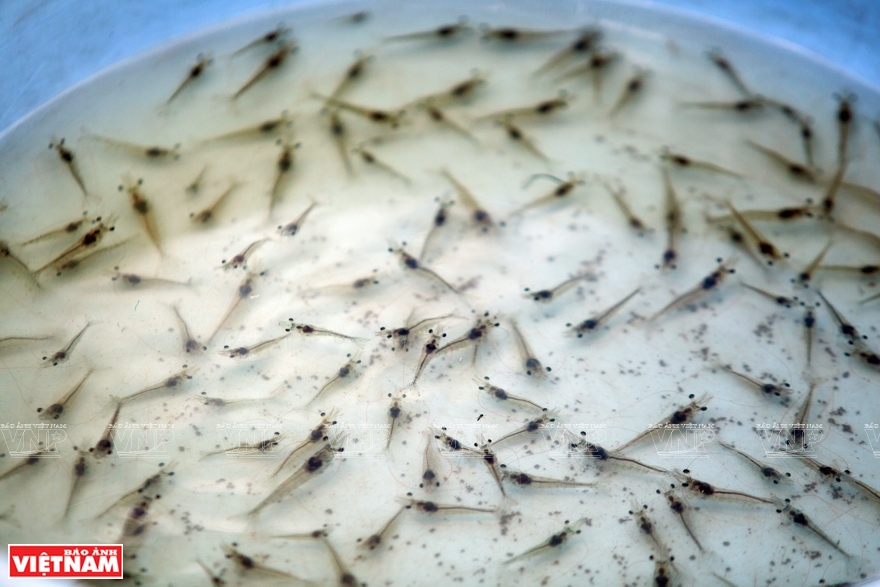 Breeder shrimp to be released into hi-tech farming ponds in Ca Mau. Photo: Le Minh
Harvesting shrimp in Dam Doi district, Ca Mau. Photo: Bao Lam
Harvesting shrimp at Nam Dong cooperative in Vinh Trach Dong commune, Bac Lieu. Photo: Le Minh
|
Hung’s one-hectare shrimp farm has three shrimp ponds, two ponds for water treatment and three others for biogas production from shrimp pond sediment. The farm has a total investment of 1.2 billion dong (over 50,000 US dollars).
| Vietnam has a total shrimp farming area of about 720,000 hectares, including 280,000 hectares in Ca Mau, accounting nearly 40% of the country’s total. Ca Mau has developed intensive shrimp farming in Nam Can, Ngoc Hien, Tan Phu and Ca Mau city. |
Hung said the intensive farming model requires a strict process which includes sufficiently feeding the shrimp, controlling the water quality, changing water and cleaning pond, and monitoring the growth of shrimp.
Nam Dong Cooperative in Vinh Trach Dong commune, Bac Lieu, has three shrimp ponds with a total area of 4,500 m2. Each crop, the cooperative raises 500,000 shrimps and harvests over 9 tons of shrimp, earning around 900 million dong (over 39,000 US dollars), said its director Nong Quoc Tri.
Vietnamese shrimp present worldwide
Vietnam now has 100 shrimp processing mills with an average capacity of 500,000-700,000 tons/year. Major shrimp exporters include Minh Phu in Ca Mau, Vinh Hoan in Dong Thap province, Hung Vuong in Tien Giang province, and Viet-Uc in Ho Chi Minh City.
Ca Mau alone has over 30 mills with a total annual processing capacity of about 200,000 tons, exporting shrimp to 90 countries nationwide. Minh Phu Seafood Corporation in Ca Mau is one of the country’s four leading shrimp exporters. The corporation has a plant in Ca Mau and another in Hau Giang, which exported a total of over 700 million US dollars in 2018. The Ca Mau-based plant alone exported nearly 400 million US dollars, accounting for one-third of Ca Mau’s shrimp export value.
|
Prime Minister Nguyen Xuan Phuc visits an export shrimp processing plant at Minh Phu Seafood Corporation in Ca Mau. Photo: The Anh
. Processing export products at Minh Phu Seafood Corporation in Ca Mau. Photo: Tan Diep
Packaging shrimp for export in Ca Mau. Photo: Phu Huu
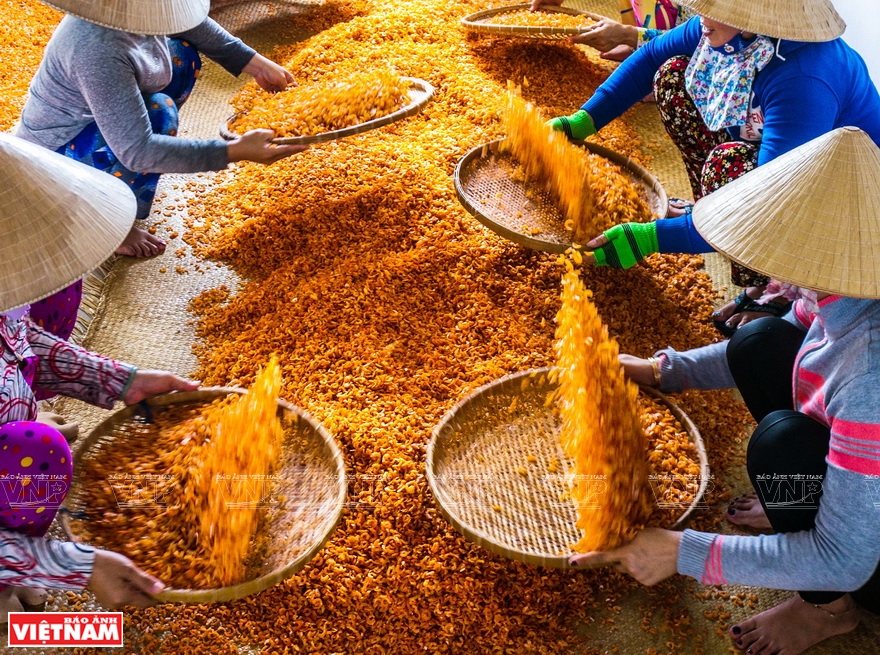
Processing dried shrimp in Ca Mau. Photo: Huynh Lam
|
The People’s Committee of Ca Mau has recently held the Fisheries Business Connection Day. The event drew Aramark, Bon Appettite, Santa Monica Seafoods, and Fortune Fish & Gourmet from the US, and Vietnamese suppliers and dealers. At this event, a memorandum of understanding establishing the Vietnam Sustainable Shrimp Alliance (VSSA) was signed by 30 shrimp suppliers in Vietnam to promote sustainable shrimp production.
The shrimp industry is focusing investment to develop closed shrimp farming systems from production to sale to reduce the production costs and improve the shrimp quality. Shrimp farmers have jointly set up cooperatives to rear shrimp on a large scale. These cooperatives are supplied quality shrimp breeds, feed and supplies for shrimp rearing by breeder shrimp producers, which at the same time guarantee the sale output for these cooperatives. Other involved parties, including scientists, management authorities, and banks, have also provided support for the formation of these closed shrimp farming systems.
| Vietnam has now exported shrimp to 90 countries and territories, including the US, Japan, South Korea and European countries. The country’s shrimp export value reached 3.5 billion US dollars in 2018, of which Ca Mau made up nearly 1.2 billion US dollars, or 30% of the total export output. |
Photos: Le Minh, Huynh Lam, Tan Diep,
Phan Thanh Cuong, Phu Huu, The Anh & Bao Lam

